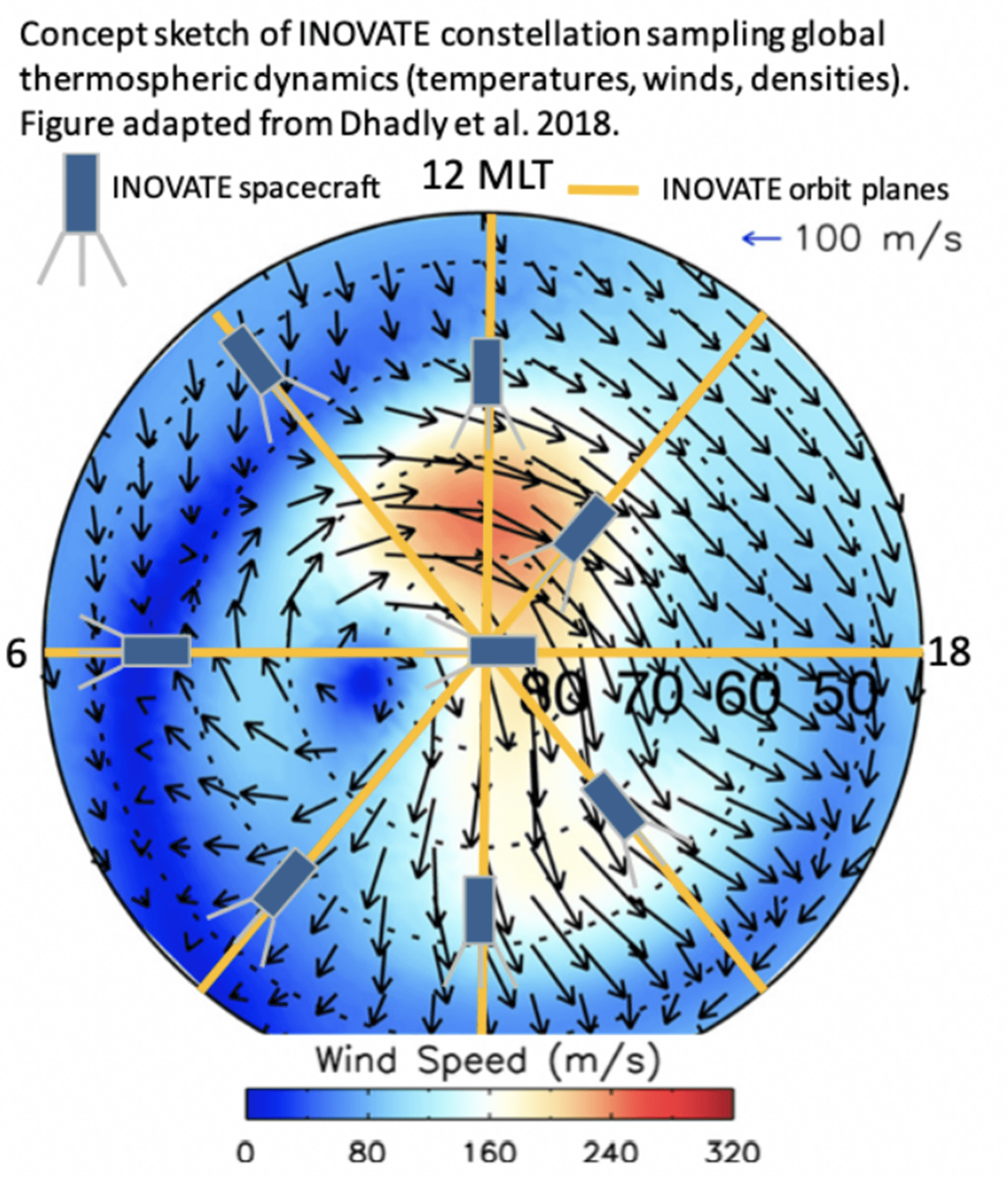Marcin Pilinski
University of Colorado, Boulder
The goal of the proposed work is for a global constellation of spacecraft swarms to study thermospheric dynamics by enabling robust, low-cost distributed measurements of neutral winds and temperatures. These goals are in-line with the NASA Heliophysics science objectives while also leading to much-needed monitoring of space weather effects in low-earth orbit (LEO). The relevant architecture, the In-Situ Neutral-Optics Velocity Analysis for Thermospheric Exploration or INOVATE, will be developed by achieving three main objectives. The first is the development of the INOVATE mission architecture necessary to observe salient dynamics and deconvolve spatial-temporal ambiguities in Earth orbit. This will be accomplished by observing system simulations in the context of salient dynamical processes such as storm responses, circulation cells, and traveling atmospheric disturbances. The second objective is the development of a completely new system for the analysis of neutral atoms at thermal energies (<10eV) that vastly increases the robustness of observing neutral winds and temperatures while reducing the cost and risk. This will be accomplished by simplifying the observing system through the elimination of ion-optics, expandable components, and by replacing fragile detectors with more robust techniques. As a result, the observing system could be produced at scale and within a reasonable cost while achieving unprecedented coverage and improving data quality. The methods used to achieve these goals will include observing system simulations (how many satellites are needed and in what locations?), neutral atom beam experiments (validate velocity/temperature analysis method), and instrument modeling using test particle models that extends the laboratory results to a more realistic measurement error model (what are the detection requirements?). The novel neutral optics approach to analyzing thermal atoms is based on laboratory results showing super-specular scattering of atmospheric species from certain materials wherein the most probable scattering direction is a function of the incident velocity. We will validate this approach in Phase I using ~5eV atomic oxygen and molecular nitrogen beams. In phase II we will make further improvements focused on directly detecting the neutral atoms without electron-impact ionization and without the need for fragile detectors. Neutral winds and temperatures are an under-observed quantity critical for understanding thermospheric dynamics and energetics at planets such as Earth, Mars, and Venus. Neutral wind measurements are a focus of NASA efforts such as Geospace Dynamics Constellation to which INOVATE would be complementary and are prominently featured in the Decadal strategy for Solar and Space Physics (Heliophysics) due to their importance in geomagnetic storm response, neutral winds dynamo, and ion-neutral coupling. Neutral winds and temperatures are also critical to understanding the transport of lighter species and the dynamical heating of the thermosphere that could in turn effect atmospheric escape processes on the terrestrial planets.
































